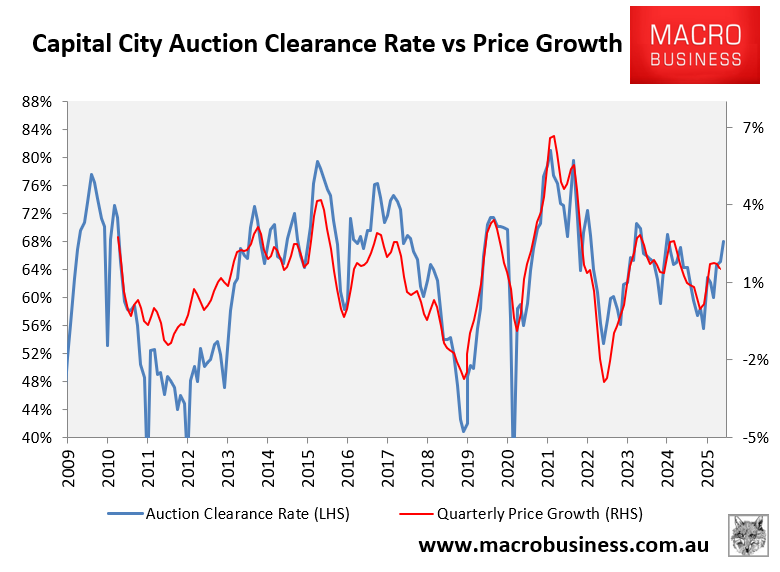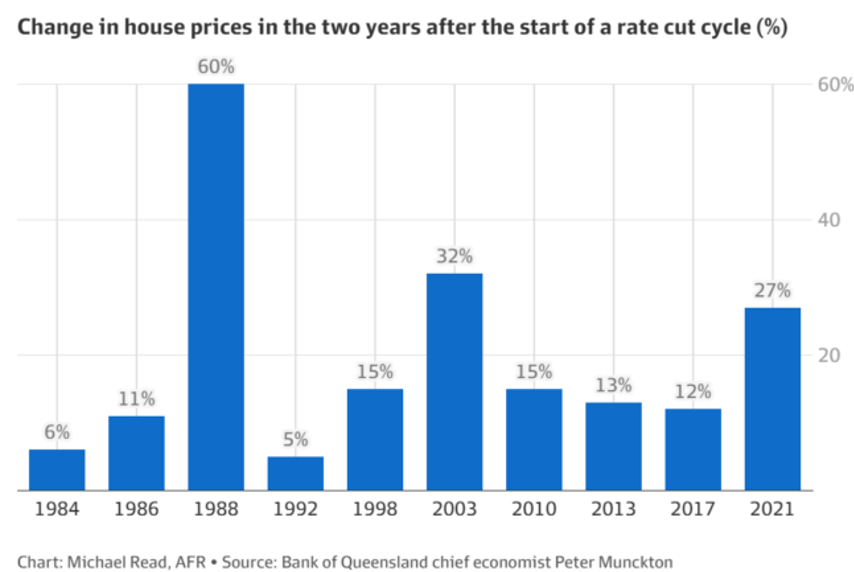In June, Australian property values reached a record high, as illustrated by PropTrack below.

The Westpac Consumer Sentiment Index, released this week, confirmed that Australians had turned hyper-bullish on property prices, expecting large increases in the coming months.
As illustrated below by AMP chief economist Shane Oliver, consumer expectations for house price growth have hit a cyclical high, whereas perceptions about whether now is a good time to buy a dwelling have also picked up from recent lows.

Meanwhile, the national final auction clearance rate has also risen to a cyclical high of 68% on a monthly average basis, the highest rate since February 2024, indicating stronger buyer demand and portending further house price growth.

Australians are right to feel bullish about home prices.
Despite the Reserve Bank of Australia (RBA) unexpectedly keeping the official cash rate on hold this month, financial markets are tipping another three cuts over the coming year, which would come on top of the two 25 bp cuts already delivered.

Recent analysis published in the Australian Financial Review showed that home values typically record double-digit growth following a rate-cutting cycle:

A raft of demand-side stimulatory policies also promises to push home prices higher.
These policies include the Albanese government’s 5% deposit scheme for first-time home buyers, the expansion of the Help-to-Buy shared equity scheme, changes to lending rules that prohibit banks from including student debts in loan serviceability assessments, and various state government policies, such as the generous shared equity scheme announced in the latest Queensland state budget.
The combination of interest rate cuts and stimulatory government policies will necessarily drive home prices higher.
Australia’s total housing stock was valued at $11.4 trillion in May, equating to an average of just over $1 million per dwelling.
The last thing that the nation needs is for home values to inflate even further.
Australia is beginning to resemble a housing bubble with an economy attached.

